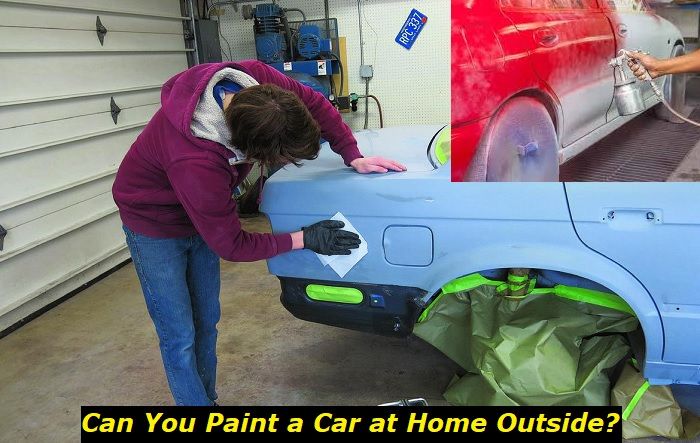The camshaft position sensor is as important as the other components of your Jeep Cherokee. It is one of the many elements that are crucial to the proper function of its engine. In general, the operation of this component dictates your power unit's performance and fuel economy; hence, its failure can have dire consequences.
In this article, you will learn the red flags that may suggest problems within this part. Also included here are ways for you to tackle the causes of the problem to prevent them from growing into more complex issues.

How the Camshaft Position Sensor Works
The camshaft position sensor is a part of the engine management system (EMS) that monitors the rotational position and speed of the camshaft to ensure that the engine runs smoothly and efficiently. The data gathered by the sensor is used by the engine control unit to ensure the correct timing of fuel injection and ignition.
The camshaft position sensor is located at the top of the engine near the camshaft itself and it works in harmony with the crankshaft position sensor. It consists of a magnet and a coil. As the camshaft turns, the magnet passes by the coil, inducing an electric current. This current is then converted into a signal that can be read by the engine control unit.
The camshaft operates using the Hall principle, which is a basic law of physics. Simply put, this principle states that when a magnetic field is moving past a conductor, an electric current is induced in the conductor. The strength of the current depends on the strength of the magnetic field, the speed at which it is moving, and the size of the conductor.
By the way, the Cherokee has other electrical and electronic issues like the SVC 4WD light illuminating - you may read more about this light in this article.
Ways to Tell if the Camshaft Position Sensor is Faulty
At the onset of a camshaft position sensor problem, you can still run your engine and drive your Cherokee. However, when the issue is prolonged, that's where more and more symptoms start to show up.
The following are the red flags you should watch out for because they are good indications that something is wrong with your camshaft position sensor.
1. Engine Light Illuminated
The check engine light is often the first indicator of a camshaft position sensor issue. This is primarily because the failure of the sensor can trigger plenty of problems with how the camshaft and the whole engine operate.
2. Fault Code Stored
Together with the check engine light is usually a corresponding fault code stored in the vehicle's computer system. You can have this scanned using an OBDII reader.
3. Engine Misfires
If you notice that your engine is misfiring, it could be a sign that the camshaft position sensor is going bad. When this happens, one or more cylinders will fire abnormally or not fire at all.
4. Poor Fuel Economy
This is one more telltale sign of a problem with the camshaft position sensor. When the sensor malfunctions, it can cause the engine to run lean or rich, which then leads to poor fuel economy.
5. Stalling Engine
If your engine stalls frequently, especially when idling, it is likely that the camshaft position sensor is not functioning properly. In severe cases, especially if the problem is ignored for a long time and it branches out into a more complicated issue with your vehicle's power unit, the engine might not start at all.
6. Rough Idle
If you notice that your engine is idling roughly, it could be a sign of a problem with the camshaft position sensor. This is often accompanied by engine misfires and stalling.
7. Engine Performance Issues
When the camshaft position sensor goes bad, it can cause all sorts of problems with engine performance. You might notice that the acceleration is not as responsive as it used to be or that the engine power is reduced.
8. Excessive Exhaust Emissions
Another symptom of a failing camshaft position sensor is excessive exhaust emissions. This is one of the many effects of an engine that is running lean or rich.
9. Hard Starts
As mentioned earlier, a camshaft position sensor that's completely faulty will prevent the engine from starting at all. This is usually accompanied by other symptoms like engine misfires and stalling.
Potential Solutions to the Common Causes of the Camshaft Position Sensor Issues
Many factors can cause camshaft position sensor problems in the Jeep Cherokee. The various methods of solving them are the following:
1. Software Glitch
If not accompanied by noticeable performance issues, the problem may be as simple as a glitch in your vehicle's computer, which is triggering the check engine light and a false diagnosis in your sensor. Sometimes, it's gone the next time you restart your engine.
In older Cherokees, the problem can be addressed by a hard reset in the battery. You can do this by disconnecting the negative terminal of the battery for at least 30 seconds before putting it back in place. In the modern version of the SUV, this may not work and all it will do is reset the time settings and presets in its entertainment system.
Another possible solution for a mere software error is to clear the code. To clear a fault code using an OBDII reader, simply connect the reader to the vehicle's diagnostic port. Once the connection is made, the reader will access the auto's computer and you will be presented with an option to clear the code.
In some instances, if the software of your vehicle's computer is only outdated or is needing recalibration, an EMS flashing or reprogramming may do the trick. Depending on the circumstances, a factory reset may be applicable. In the case where your Jeep's EMS hardware is in itself faulty, a replacement of the module is the best course of action.
If the problem is recurring though, it would be prudent to conduct a more thorough diagnosis.
2. Low Battery Power
When the battery is about to go out, it affects not just your cam position sensors but all the electronic components of your vehicle including the ignition system.
Aside from symptoms like flickering or dimming lights, all the electric components of your Cherokee acting up, and having difficulty starting the engine, you can use a multimeter to check if there's still enough juice coming from your battery. To use a multimeter to test the battery, begin by setting the multimeter to DC voltage.
Next, connect the positive lead to the positive terminal of the battery and the negative lead to the negative terminal. If the voltmeter reads 12 volts or higher, then the battery is good. If it reads less than 12 volts, then the battery is bad and needs to be replaced.
You can also test the car battery by starting the vehicle and measuring the voltage at the battery terminals with the multimeter. The voltage should be around 14 volts when the engine is running. If it's lower than that, then the alternator is not charging the battery properly and needs to be checked.
Finally, you can test the car battery by measuring the resistance between the positive and negative terminals of the battery with a multimeter. The resistance should be low, around 0.5 ohms or less. If it's higher than that, then there may be a problem with the battery cells or terminals.
If your auto's battery fails any of these tests, then it certainly needs to be replaced.
3. Blown Fuse
A shorted fuse can result in all sorts of issues with your vehicle's electrical components, including its camshaft position sensor. To check a fuse, you'll need a multimeter.
First, make sure the multimeter is turned off. Then, locate the fuse you want to test and remove it from the fuse box. Once the fuse is out, touch one lead of the multimeter to the metal end of the fuse (the side that's not attached to anything). Touch the other lead of the multimeter to the metal tab on the side of the fuse box. If the multimeter reads "0," that means the fuse is good. If the multimeter reads "1" or anything other than "0," that means the fuse is blown and needs to be replaced.
4. Damaged Wires
Another possible suspect here is damaged wiring in the sensor. A multimeter can be a helpful tool for testing whether there is damage to the wiring in your vehicle.
To use a multimeter to test your Cherokee's wiring, make sure that the multimeter is turned off first. Then, touch the black lead of the multimeter to the negative terminal of your Jeep's battery. Next, attach the red lead of the multimeter to one of the wires in its electrical system. If there is no damage to the wire, the multimeter should read zero ohms. If there is damage to the wire, the multimeter will read infinity ohms.
Any wiring that appears to have been compromised must be fixed immediately to prevent electrical problems that may damage your sensor and other parts of your vehicle.
5. Faulty Sensor
If everything checks well, proceed with the camshaft position sensor. Again, the multimeter is your friend here.
First, disconnect the sensor from the vehicle's electrical system. Then, set your multimeter to the ohms setting and place the probes on the sensor's terminals. If the multimeter reading is infinite, then the sensor is faulty and needs to be replaced.
There are also visual indications of a faulty sensor. These include signs of shorting, corrosion, contamination, or breakage in some of its areas. Whichever is the case, replacing the defective sensor is the only way to go.
Conclusion
Be on the lookout for the most common symptoms of a camshaft position sensor problem in your Jeep Cherokee. Should you start to notice any of the signs discussed here, you should immediately bring your vehicle to a mechanic or technician for a quick resolution of the issue. This is to ensure the best driving quality and performance of your auto in the long run.
About the authors
The CarAraC research team is composed of seasoned auto mechanics and automotive industry professionals, including individuals with advanced degrees and certifications in their field. Our team members boast prestigious credentials, reflecting their extensive knowledge and skills. These qualifications include: IMI: Institute of the Motor Industry, ASE-Certified Master Automobile Technicians; Coventry University, Graduate of MA in Automotive Journalism; Politecnico di Torino, Italy, MS Automotive Engineering; Ss. Cyril and Methodius University in Skopje, Mechanical University in Skopje; TOC Automotive College; DHA Suffa University, Department of Mechanical Engineering






Add comment